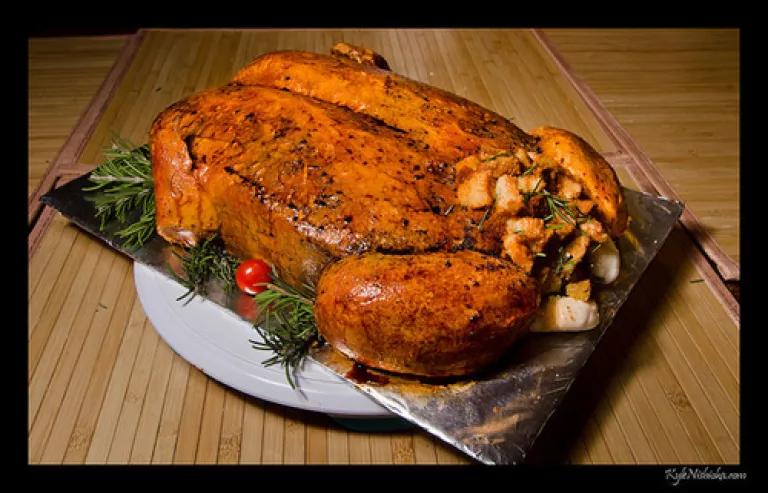
Just in time for Thanksgiving, Michael Pollan has come out with a brand new food rule, which if followed would do wonders for wasting less food:
Michael Pollan’s Food Rule #84: Take Back Control of Your Plate
Bravo, Mr. Pollan! This is a fitting rule for Thanksgiving time, when our plates do seem to get completely out of control. So out of control, in fact, that last year approximately $277 million of turkey was thrown away over the Thanksgiving holiday alone! You can be sure that those pilgrims we are celebrating were truly grateful for the food before them, but are we? Or, has the abundance on our plates gotten a little out of hand?
As with his other rules, Pollan goes on to explain just what he means and why this rule is important:
Supersized portions have become the bane of both our health and the health of the planet. Most of us eat what’s put in front of us, ignoring signals of satiety; the only possible outcomes are either overeating or food waste. Gluttony is never pretty, but when a billion people in the world are hungry, it becomes unconscionable. So if you’re serving yourself, take no more than you know you can finish; err on the side of serving yourself too little, since you can always go back for seconds. When you’re at a restaurant that serves Brobdingnagian portions, tell your server you’d prefer a modest serving and the option of asking for more if it doesn’t satisfy. To let others manipulate you by overfilling your plate is a wasteful concession to marketing and the very opposite of conscious eating. We need a movement to make reasonable portions and “seconds” the norm in restaurants. That way, the restaurant can still offer the perceived value of “all you can eat” but without the inevitable waste.
Besides the fact that he uses the word Brobdingnagian (which, as a reminder if you haven’t read Gulliver’s Travels lately, means “of colossal size”), what I like about this rule is that it is empowering. We can take this situation into our own hands, people! Portion sizes have grown tremendously — the average cookie, in fact, has quadrupled in calories since the 1980s — but we don’t have to sit idly. We can be thankful for our food, and we can not take too much of it.

The amount of turkey wasted over Thanksgiving — about 204 million pounds — is enough to provide 46 4-ounce servings of turkey for every American household that is food insecure. Forty-six per household! Instead, it lands in our garbage can, as do all the resources it took to grow and nurture those birds: enough much water to supply New York City for 100 days and greenhouse gases equivalent to 800,000 car trips from San Francisco to New York.[1]
This Thanksgiving, I invite you to truly be thankful of the feast before you and to take control of your plate and portions. Stop for a moment and reflect on everything it takes to bring that brilliant feast to your table — the grains that were grown to feed your turkey, the bog that nurtured your cranberries, the land that allowed your pumpkin to spread its big leaves all over, and the hands that worked tirelessly to grow our food. Then fill your plate with just what you can actually eat, and dig in!
[1] Here’s the math: Producing one pound of turkey meat releases 5 kg of CO2 emissions according to the Environmental Working Group and uses 520 gallons of water (if it’s similar to chicken production as estimated by the Water Footprint Network.). Using the EPA’s greenhouse gas equivalencies, that’s a per-turkey-pound equivalent of driving your car 11.9 miles and taking a 130-minute shower (at 4 gallons/minute). Nationwide, consumers will purchase around 736 million pounds of turkey this Thanksgiving, of which about 581 million pounds will be actual meat (assuming 21% inedible portion estimated by USDA). Using the USDA estimate of 35% consumer loss for turkey, that amounts to 204 million pounds of meat discarded. Multiplied by the above numbers, that equates to a total of about 1 million tons of CO2 and 105 billion gallons of water with it. New York City consumes about 1 billion gallons of water per day and San Francisco is 2915 miles from New York, according to Google. USDA defines a serving as 3-4 ounces of lean meat — four ounces were used for this calculation. 17.9 million households in the US are food insecure according to the USDA.
Photos: Feedback (top); Kyle Nishioka on Flickr (bottom).
